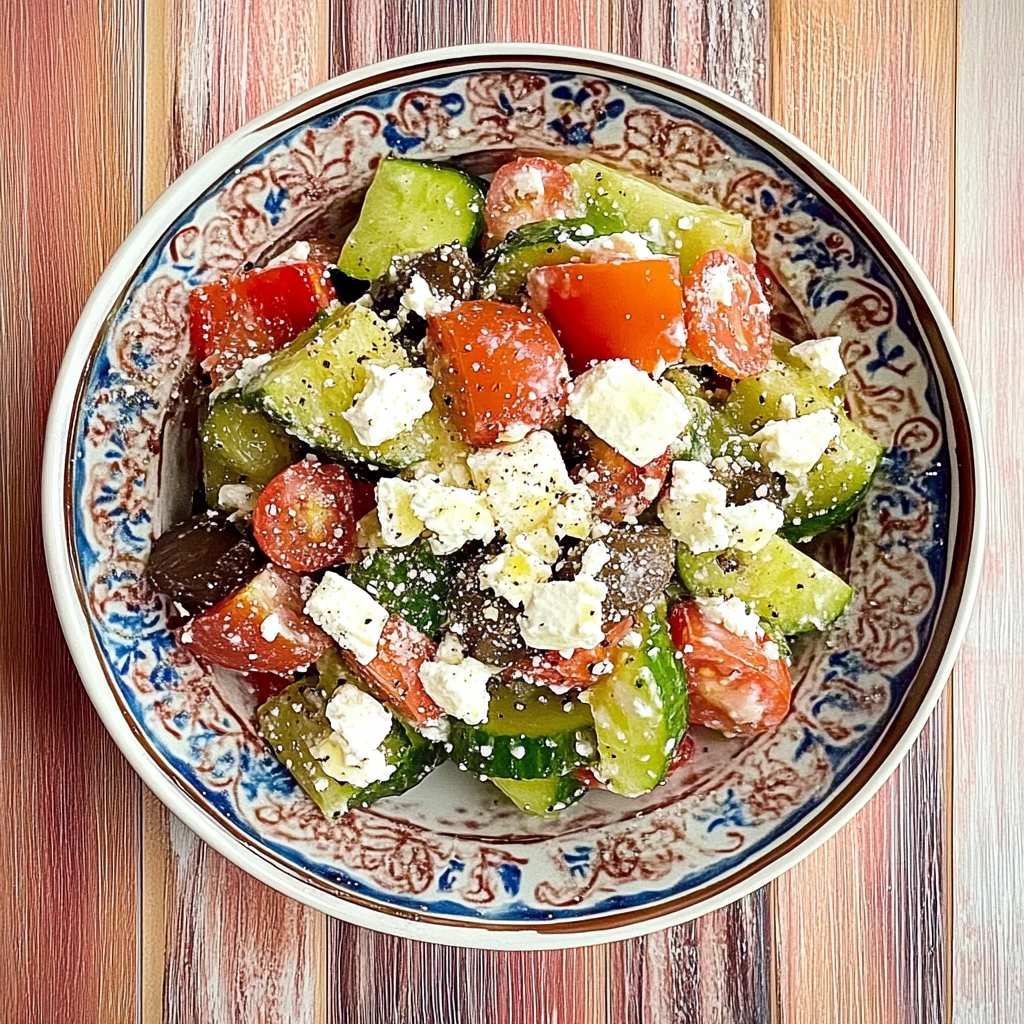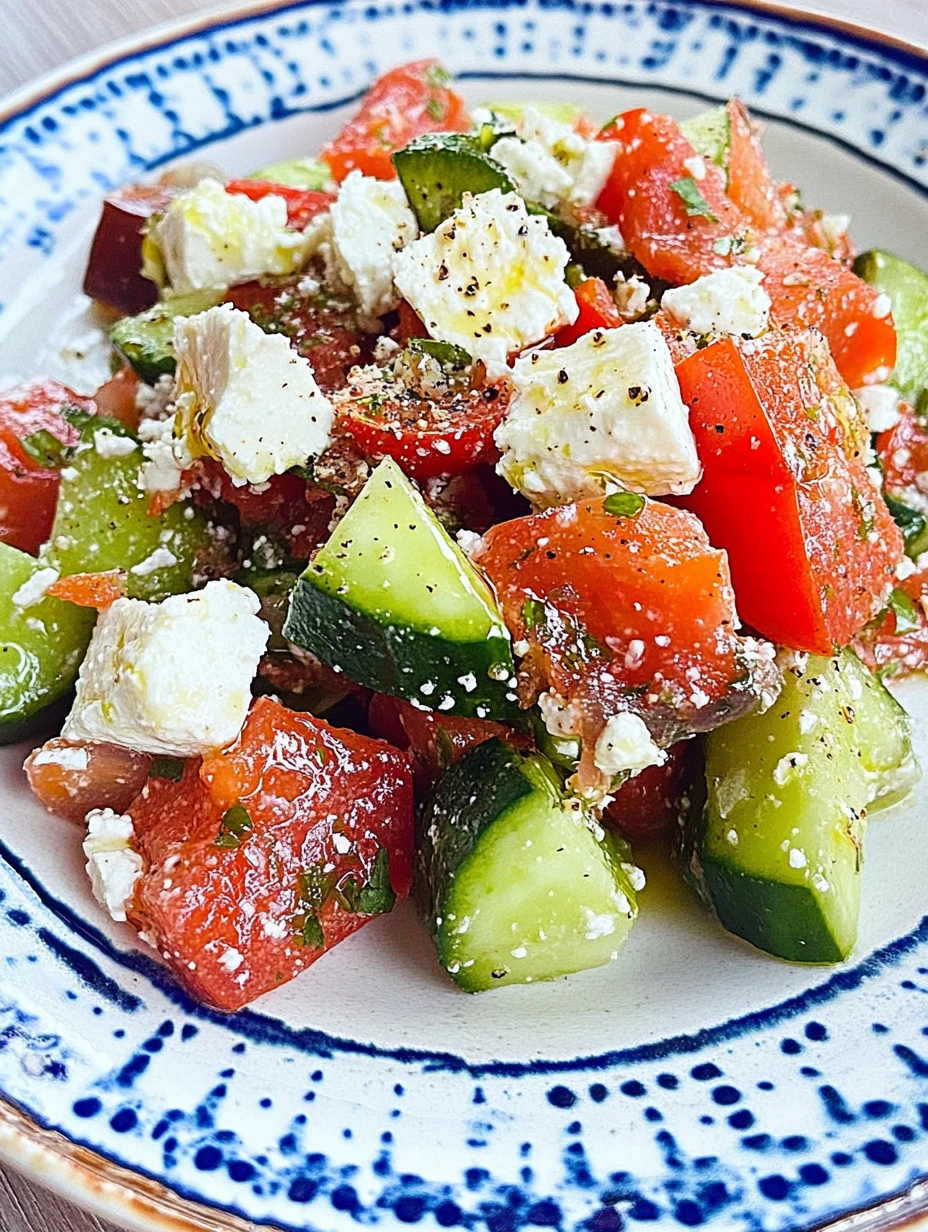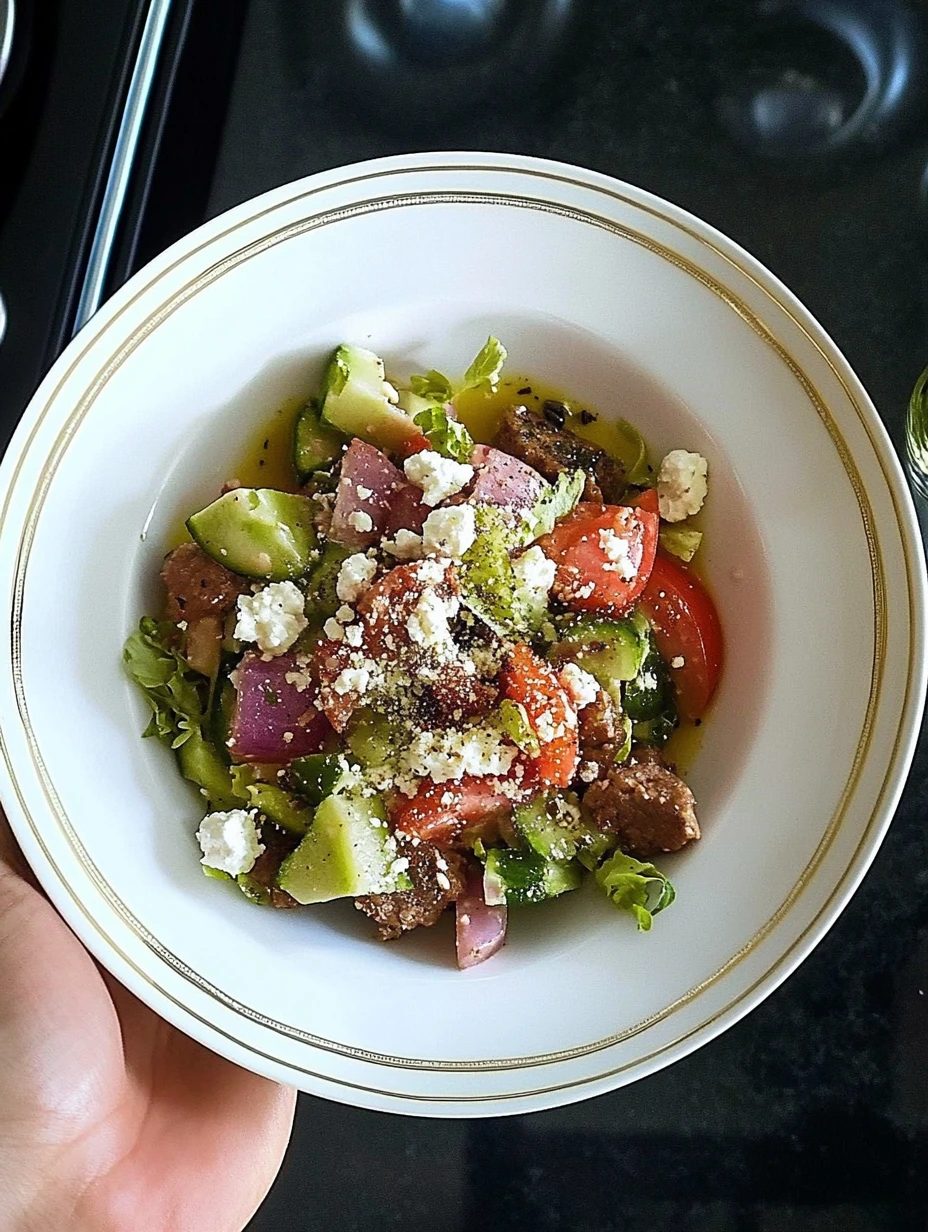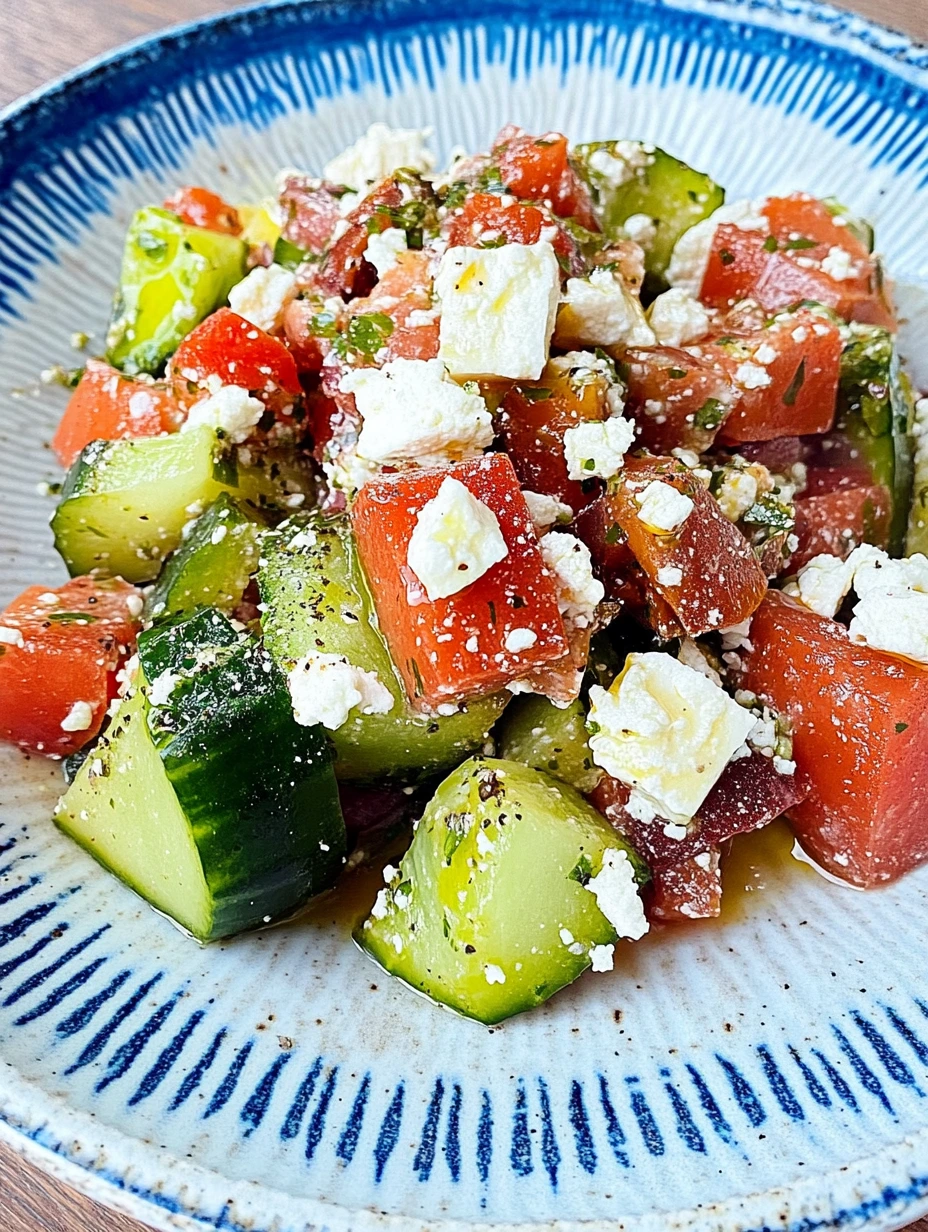 Pin it
Pin it
The traditional Greek salad, or "horiatiki" as locals call it, brings sun-soaked Mediterranean flavors straight to your table. This bright mix of crunchy veggies, creamy feta cheese, and Kalamata olives relies on pure simplicity for its magic. Each bite whisks you away to Greek tavernas where families have enjoyed this dish for countless generations.
Must-Have Ingredients
- Real feta: Go for one with the PGI label that confirms it's made in Greece from sheep's milk - its crumbly texture and slightly tangy taste make all the difference
- Vine-ripened tomatoes: Look for meaty ones that ripened on the vine, as their juices will mix with the dressing to create an amazing natural sauce
- Crisp cucumber: Its crunchy bite and cooling flavor balance out the stronger tastes of other ingredients perfectly
- Red onion: It offers sweetness and color that white onions just don't have - pick young ones to avoid bitterness
- Green bell pepper: Its slight bitterness works wonderfully against the sweetness of tomatoes and saltiness of feta
- Kalamata olives: Their meaty texture and deep flavor can't be replaced, don't settle for substitutes
- Dried oregano: Greeks call it "rigani" and use it sparingly to add aroma without overpowering
- Extra virgin olive oil: A key element - pick one that's fruity with a hint of pepper
 Pin it
Pin it
Kitchen Choreography
- Veggie prep:
- Rinse all veggies thoroughly under cold water. Cut tomatoes into generous quarters or big irregular chunks. Slice cucumber into half-inch thick rounds or half-moons if it's particularly large. Thinly slice red onion into rings or half-rings. Cut green pepper into even strips after removing the seeds.
- Dressing creation:
- In a small bowl, combine three tablespoons of extra virgin olive oil with juice from half a fresh lemon. Add a generous pinch of dried oregano, rubbing it between your palms to release the flavor. Whisk vigorously with a fork until slightly thickened. You can also blend this dressing for a smoother texture.
- Putting it together:
- In a wide bowl, arrange the cut veggies attractively without mixing them. Scatter pitted Kalamata olives throughout. Crumble plenty of feta over the veggies in big irregular chunks. Drizzle your dressing gently over everything just before serving.
- Final touches:
- Let everything sit for two minutes so flavors start to blend. Right before serving, gently toss to distribute the partially crumbled feta, which will slightly thicken the dressing.
During my last trip to the Cyclades, a restaurant owner shared his secret of sprinkling sea salt on tomatoes before adding them to the salad. This simple trick brings out their natural sweetness and gets them to release some juice. My kids, who normally turn their noses up at veggies, now fight over the last bites when I make the salad this way.
Perfect Pairings
This classic Greek salad stands on its own for a light lunch but works beautifully alongside other dishes too. Served with warm, lightly toasted pita bread, it becomes a complete meal. For a fancier dinner, pair it with grilled fish like sea bass or sea bream, just drizzled with olive oil and lemon. The flavors blend perfectly for a truly Mediterranean dining experience.
Creative Twists
While traditional, Greek salad welcomes a few respectful variations. For a more colorful version, throw in some red or yellow bell peppers alongside the classic green. Folks who love bold flavors might enjoy adding rinsed and dried capers. For extra freshness, sprinkle in some hand-torn mint leaves. Purists sometimes mix whole cherry tomatoes with regular tomatoes for varied textures.
 Pin it
Pin it
Keeping It Fresh
Unlike other salads, the Greek kind doesn't store well. To enjoy its freshness fully, make it right before eating. If you absolutely must prep ahead, keep all ingredients separate and add dressing only at the last minute. You can cut veggies a few hours early and store them in the fridge under a damp cloth to keep their natural crunch.
 Pin it
Pin it
My first taste of real Greek salad changed how I think about salads forever. This dish captures the heart of Mediterranean cooking where respecting ingredients matters more than fancy techniques. I still remember a family taverna on Paros island, where grandma made this salad every night using veggies freshly picked from her garden. Her simple movements created such complex flavors. I try to bring that same authenticity to my kitchen, celebrating Greek culinary tradition in its purest form every day.
Frequently Asked Questions
- → Can you make Greek salad ahead of time?
- You can prep the ingredients beforehand, but wait to mix the salad until right before eating to keep the veggies crisp.
- → What kind of feta works best for Greek salad?
- Look for genuine Greek feta made from sheep's milk. It's creamier and less sharp than the other options.
- → Can you swap out Kalamata olives?
- Kalamata olives give a unique flavor, but you can sub them with regular black olives if needed.
- → What’s the best way to chop veggies for Greek salad?
- Go for bigger cuts: thick cucumber half-slices, tomato wedges, and thin pepper strips for a traditional texture.
- → How long does Greek salad keep?
- It’s best eaten fresh, but leftovers can chill for 1–2 days. However, veggies might soften, and feta will soak up the dressing.
